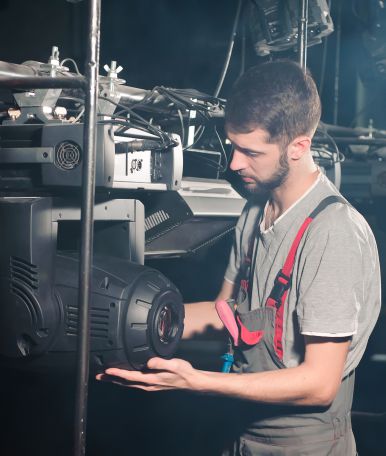Directorate General of Civil Aviation Approve Programs
Aircraft Maintenance Engineering (Mechanical / Avionics)
The Aircraft Maintenance Engineering or AME is a niche course offered by very few institutes in India. It deals with the maintenance, upgrade and quality assurance of aircraft. Aircraft Maintenance Engineering is a licensed course and has been approved by the Directorate General of Civil Aviation (DGCA). Aircraft Maintenance Engineers (AMEs) play a vital role in the aviation industry and mainly deal with the maintenance, repair and overhauling of aircrafts to the standards of International Civil Aviation Organization (ICAO).
- Maintenance related to Air frame: Performing scheduled/ Non-scheduled maintenance, making emergency repairs, maintenance related to air frame viz. mechanical and Aircraft hydraulic systems, Air Conditioning System, Aircraft Pressurization System, Aircraft Landing Gear System, Aircraft structure, Aircraft Pneumatic System etc.
- Maintenance related to Aircraft Engine, Aircraft Fuel System, Aircraft Oil System, Engine Starting & Ignition System, Fire Protection System etc.


Aircraft Maintenance Engineering with B.Sc. Aeronautics (Avionics Stream)
Aircraft Maintenance Engineering or AME with B.Sc. Aeronautics (Avionics Stream) is a niche course offered by very few institute. It deals with the maintenance, upgrade and quality assurance of aircraft. Aircraft Maintenance Engineering is a licensed course and has been approved by the Directorate General of Civil Aviation (DGCA). Aircraft Maintenance Engineers (AMEs) play a vital role in the aviation industry and mainly deal with the maintenance, repair and overhauling of aircrafts to the standards of International Civil Aviation Organization (ICAO).Among the most rewarding courses dedicated to nurturing and building proficient, knowledgeable and skilled engineering professionals, it caters to the ever growing demand for engineers capable of issuing the “Certificate of Airworthiness” for safe air travel, something necessary before a pilot can actually fly the aircraft. A graduation degree along with AME makes candidates eligible for various private as well as Govt. jobs which mandatory requires a degree. Hence there is a two in one advantage of this integrated AME with B.Sc. Aeronautics Program. Students who opt of avionics stream under this category mainly get trained in Instrument Systems, Automatic Pilot System (Fixed and Rotary Wing), Including Auto-Throttle & Auto-Land System, Radio Communication, Navigation & Radar Systems, Electrical Power Generation & Distribution to Avionics Systems.
- Instrument Systems
- Radio Communication, Navigation and Radar Systems
- Electrical Power Generation and Distribution to Avionic Systems.
- Automatic Pilot Systems (fixed and rotary wing), including Auto-throttle and Auto-land Systems.
Aircraft Maintenance Engineering with B.Sc. Aeronautics (Mechanical Stream)
Aircraft Maintenance Engineering or AME with B.Sc. Aeronautics (Mechanical Stream) is a niche course offered by very few institute. It deals with the maintenance, upgrade and quality assurance of aircraft. Aircraft Maintenance Engineering is a licensed course and has been approved by the Directorate General of Civil Aviation (DGCA). Aircraft Maintenance Engineers (AMEs) play a vital role in the aviation industry and mainly deal with the maintenance, repair and overhauling of aircrafts to the standards of International Civil Aviation Organization (ICAO).Among the most rewarding courses dedicated to nurturing and building proficient, knowledgeable and skilled engineering professionals, it caters to the ever growing demand for engineers capable of issuing the “Certificate of Airworthiness” for safe air travel, something necessary before a pilot can actually fly the aircraft. A graduation degree along with AME makes candidates eligible for various private as well as Govt. jobs which mandatory requires a degree. Hence there is a two in one advantage of this integrated AME with B.Sc. Aeronautics Program. Students who opt of mechanical stream under this category mainly focus at engineering, physics, and materials science principles to design, analyse, manufacture, and maintain mechanical systems of an Aircraft.


